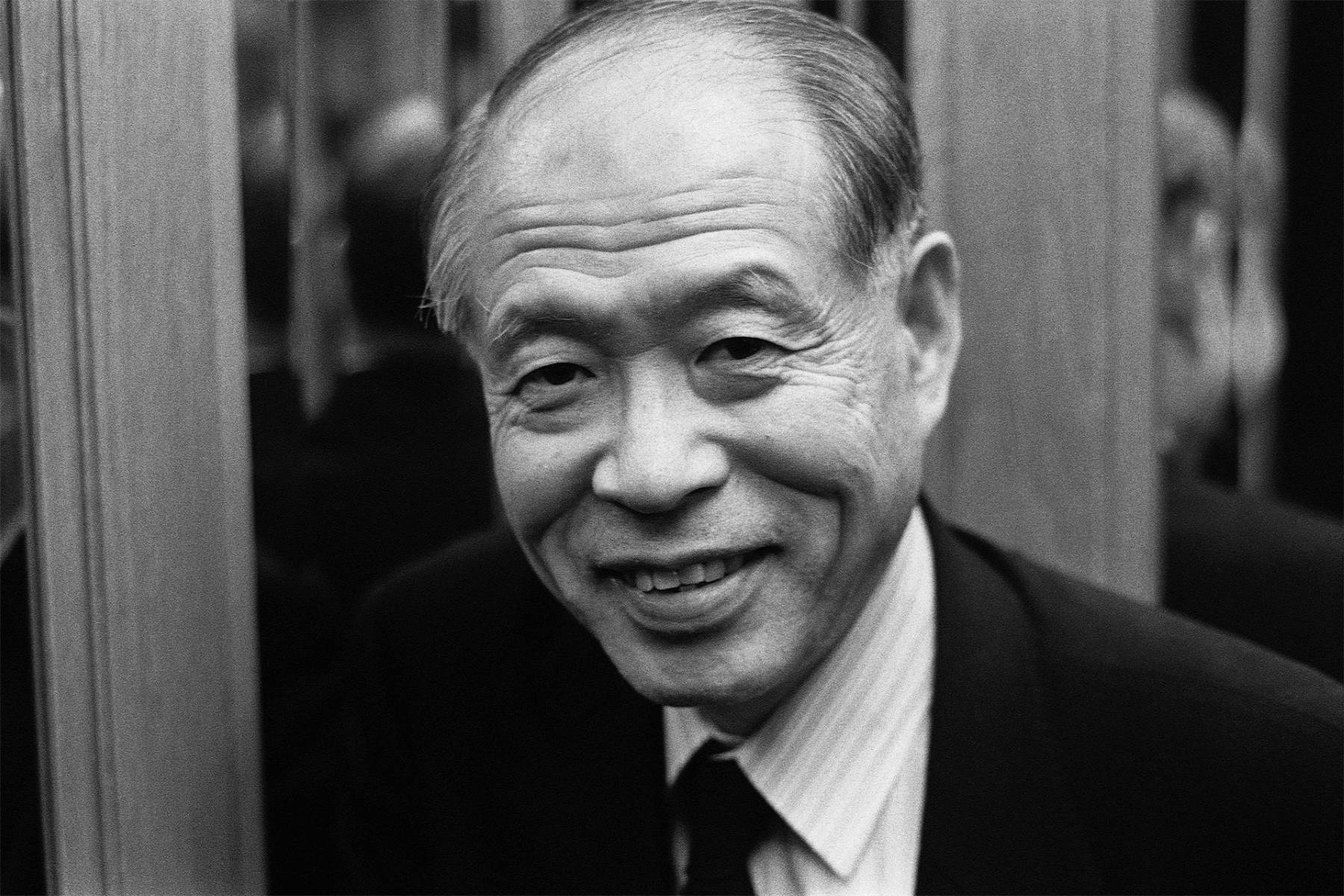
Dr. William S. Knowles was not just an ordinary scientist; he was a pioneer, a Nobel laureate, and a true visionary. Throughout his remarkable career, Dr. Knowles made ground-breaking discoveries and contributions to the field of chemistry that revolutionized the way we approach organic synthesis.
In this article, we will delve into the life and work of Dr. William S. Knowles, uncovering 10 fascinating facts about this brilliant mind. From his early days as a student to his groundbreaking achievements and recognition on the global stage, we will explore the journey of a man who helped shape the world of chemistry as we know it today.
So, get ready to be inspired and amazed as we take a closer look at the life and accomplishments of Dr. William S. Knowles, a true luminary in the world of science.
Key Takeaways:
- Dr. William S. Knowles revolutionized drug manufacturing by developing methods to create safer and more effective pharmaceuticals, earning him the Nobel Prize in Chemistry in 2001.
- His pioneering work in asymmetric synthesis continues to inspire future scientists, leaving a lasting impact on the world of chemistry and drug development.
Dr. William S. Knowles revolutionized the field of asymmetric synthesis.
Dr. William S. Knowles, a prominent chemist, made groundbreaking contributions to the field of asymmetric synthesis. His research focused on developing methods to selectively produce a single enantiomer of a molecule, a crucial process in the production of pharmaceuticals. The advancements he made significantly enhanced the efficiency and cost-effectiveness of drug manufacturing.
Knowles was awarded the Nobel Prize in Chemistry in 2001.
In recognition of his exceptional work in asymmetric synthesis, Dr. William S. Knowles was awarded the Nobel Prize in Chemistry in His groundbreaking achievements transformed the field and had a profound impact on the pharmaceutical industry.
He developed the Knowles catalyst.
One of Dr. Knowles’ most significant contributions was the development of the Knowles catalyst. This catalyst, also known as a chiral rhodium complex, played a crucial role in asymmetric hydrogenation reactions. The catalyst allowed for the production of pharmaceuticals with higher purity and fewer side effects.
Dr. Knowles’ research paved the way for more efficient drug synthesis.
By discovering innovative methods for asymmetric synthesis, Dr. William S. Knowles revolutionized drug synthesis. His techniques reduced the time and cost required to manufacture pharmaceuticals, leading to the development of more accessible and affordable medications for patients worldwide.
He received numerous prestigious awards for his contributions to science.
In addition to the Nobel Prize, Dr. Knowles received several other notable honors for his contributions to science. These include the Wolf Prize in Chemistry, the Priestley Medal, and the Perkin Medal. His work continues to inspire and influence chemists around the world.
Dr. William S. Knowles was born in 1917 in the United States.
Born on June 1, 1917, in Taunton, Massachusetts, Dr. Knowles grew up with a passion for chemistry. His upbringing and early education laid the foundation for his future groundbreaking discoveries and scientific accomplishments.
He earned his Ph.D. in Chemistry from Harvard University.
Dr. Knowles pursued his academic career at prestigious institutions, earning his Ph.D. in Chemistry from Harvard University. His studies provided him with the knowledge and skills necessary to embark on a journey of scientific innovation and research.
Knowles collaborated with several renowned scientists throughout his career.
During his career, Dr. William S. Knowles collaborated with esteemed scientists from around the world. His collaborative efforts resulted in remarkable advancements in the field of asymmetric synthesis and solidified his reputation as a leading figure in chemistry.
He was a pioneer in industrial research and development.
Dr. William S. Knowles played a crucial role in bridging the gap between academia and industry. His work emphasized the practical application of scientific principles in industrial settings, creating a synergy that propelled advancements in drug manufacturing.
Dr. Knowles’ legacy continues to inspire future generations of scientists.
Even after his passing in 2012, the impact of Dr. William S. Knowles’ work lives on. His groundbreaking research and contributions to chemistry serve as a constant source of inspiration for aspiring scientists, who strive to follow in his footsteps and push the boundaries of scientific knowledge.
In conclusion, Dr. William S. Knowles is celebrated for his pioneering work in asymmetric synthesis and his significant contributions to the field of chemistry. Through his groundbreaking discoveries, he revolutionized drug manufacturing processes and left an indelible mark on the world of science.
Conclusion
In conclusion, Dr. William S. Knowles was a remarkable individual whose contributions have left a lasting impact on the field of chemistry. His groundbreaking work in asymmetric hydrogenation revolutionized the pharmaceutical industry and earned him the recognition he truly deserved. From receiving the Nobel Prize in Chemistry to his significant role in mentoring future generations of scientists, Dr. Knowles left an inspiring legacy that continues to inspire and empower others in the scientific community. His passion, dedication, and relentless pursuit of knowledge serve as a reminder that true innovation can change the world. Dr. William S. Knowles will always be remembered as a brilliant chemist whose discoveries will continue to shape the future of chemistry.
FAQs
1. Who is Dr. William S. Knowles?
Dr. William S. Knowles was a renowned chemist who made significant contributions to the field of chemistry, especially in the area of asymmetric hydrogenation.
2. What is asymmetric hydrogenation?
Asymmetric hydrogenation is a chemical process that allows the selective production of a desired enantiomer (optical isomer) of a compound by using a chiral catalyst.
3. What is Dr. Knowles’ most notable achievement?
Dr. Knowles’ most notable achievement was his work on developing methods for asymmetric hydrogenation, for which he was awarded the Nobel Prize in Chemistry in 2001.
4. How did Dr. Knowles’ work impact the pharmaceutical industry?
Dr. Knowles’ work in asymmetric hydrogenation played a crucial role in the synthesis of chiral pharmaceuticals, making it possible to produce drugs in their optically pure form, which improves their efficacy and reduces side effects.
5. Was Dr. Knowles involved in any other significant research?
Other than his groundbreaking work in asymmetric hydrogenation, Dr. Knowles also made significant contributions to other areas of chemistry, including the synthesis of complex natural products.
Dive deeper into the fascinating world of chemistry and Nobel Prize winners. Uncover the groundbreaking contributions of Dr. Barry Sharpless, another Nobel Prize in Chemistry recipient, through 12 mind-blowing facts about his life and work. For those curious about the building blocks of life, explore 20 captivating facts about organic chemistry, a field that has revolutionized our understanding of the world around us.
Was this page helpful?
Our commitment to delivering trustworthy and engaging content is at the heart of what we do. Each fact on our site is contributed by real users like you, bringing a wealth of diverse insights and information. To ensure the highest standards of accuracy and reliability, our dedicated editors meticulously review each submission. This process guarantees that the facts we share are not only fascinating but also credible. Trust in our commitment to quality and authenticity as you explore and learn with us.


